20240930 Monday, September 30, 2024 Otaru/Sapporo
After 8 consecutive sea days, it seems like getting caught off guard arriving at a port of call for a change. Sailing around Hokkaido last night gave us a sense of how large and wild the island is.
The islands’ brown bears are the real deal. Encounters between humans and bears are not rare. The indigenous people of Hokkaido are the Ainu. Nobody knows how to live among bears better than they did. They had a tradition of taking a bear cub and raising it in a cage next to their personal dwelling for 2 years. At the end of the two years, the bear is ritualistically sacrificed so its spirit can return to the spirit world to tell others how well or poorly it was cared for by its human keepers. The Ainu suffered much the same fate in the hands of colonizing Japanese who invaded from the south, as other indigenous tribes around the planet. They were nearly extinguished, but recent efforts have been made to save what is left of that culture. They now live assimilated into Japanese society for the most part, although like in other countries, typically at the margins. You won’t find any bear cubs being raised outside any of Sapporo’s high-rise apartment buildings for sure.
It’s ironic that one of the trivia questions that we missed yesterday was what does Macrophobia mean. We had guessed it was fear of large things, but in fact, it describes a fear of long waits. That could not have been a more timely lesson because clearing Japanese customs was the stuff Macrophobics fear the most. The ship had worked to try to stagger the load according to when passengers had excursion assignments, but once we got inside the terminal building off the ship, we were greeted with a Disney-esque zig-zag maze of bollards and ropes that had us snaking back and forth in the building for an hour before we could finally end up in front of one of 4 customs agents tasked with processing each passenger. The Japanese are pretty serious about their immigration security. We were fingerprinted and photographed in addition to having our passports scanned. Our bags were also subject to search before we were cleared to board our buses. We ended up waiting in our bus for another 20 minutes as it filled up with passengers scheduled for our excursion. The bus was filled nearly to capacity, with only one surplus row after all the passengers had been loaded and accounted for. The couple headed across the aisle from us took advantage of the opportunity to split themselves between the two rows. Since the bus was built for skinny Japanese people, it was pretty tight in the hips for us. But the Japanese buses are also very new and well maintained.
Otaru is the nearest port which serves as the gateway to Sapporo, which is about an hour drive inland. The cruise ship terminal and dock look pretty new and modern. It looks like it can only accommodate one cruise ship at a time, unless they are really small ships. The Viking Orion occupied about 70% of the dock space.
Our bus headed over modern and well maintained roadways inland to Sapporo. Hokkaido gets a lot of snow in the winters, and Sapporo has a famous winter festival featuring huge snow and ice sculptures. Otaru, where the ship docks, can see over 3’ of snow on the ground through much of the winter. The 1972 Winter Olympics were held in Sapporo, and like in Banff, the ski jumps remain a disused landmark of the event. They drive on the left side of the road in Japan, like they do in the UK. But Japan’s roadways are very modern and safely designed. One thing that is really noticeable is there are lots of tiny cars. In fact, they have a special class of vehicle size that qualifies for special yellow license plates and lower taxes as an incentive. These look like they might just fit atop the bed of a full sized 1 ton US pickup truck. We did see a couple of Jeep Wranglers and Mercedes G-wagens, which are the biggest vehicles on the roads excluding lorries and cranes.
The included Viking tour took us to the Hokkaido Jingu Shinto Shrine, which was erected in 1869. It is an excellent example of a Shinto Shrine, and enshrines the spirits of 4 pioneering dieties and the Meiji Emperor. Our guide walked us through the customs of cleansing one’s hands and mouth at the bathing station outside the shrine, bowing at the entrance and avoiding the spirit pathway, and how to make a prayer and offering at the shrine. This involves making an offering, saying your prayer, clapping twice, and then bowing respectfully. There is a constant stream of people making offerings. There are also blessings for all occasions and families bring their children all dressed up to receive blessings on special occasions.
The next stop was the Hokkaido Historical Village, which was about another hour drive from the shrine. This village had a building marking the entrance that looked a lot like the building marking the front of the original Disney Land. Inside, is a vast outdoor museum containing either relocated original historic structures or authentic reproductions to create a village from the late 1800’s to early 1900’s. Otaru was founded around a fantastic natural herring fishery, and the Aoyama family built an empire on the herring fishery. One of the centerpieces of the village is a complex of the Aoyama family including the main house, storage buildings, fisherman housing, and even the latrine. You can walk throughout most of the buildings if you take your shoes off, but we were only given an hour to explore so we mostly just saw what you could from the entries into the buildings, or buildings that had passageways that you could walk through with shoes on.
There were authentic furnishings and artifacts, along with mannequins that might otherwise have been period dressed re-enactors at colonial Williamsburg, or Fort Vancouver. There as also a street trolley drawn by a horse that ran the length of the village.
From the Historical Village, it was another hour drive to get back to the ship. After grabbing a quick lunch and recharging our phones, we walked off the ship and toured some of Otaku’s waterfront. There is a canal that was redeveloped into a shopping and residential district that is now a very nice walk. We covered the eastern half of it in a down and back fashion before we headed back to the ship so we could get in some spa time and dinner before a local cultural dance presentation in the theater.
The buffet had another sea food extravaganza with crab, lobster, salt baked salmon and sushi. The swimming pool also had the roof rolled open for the first time this cruise, and it was very pleasant in the evening.
The Kagura destination performance brought a small troupe of local dancers in costumes and musicians with traditional instruments (drums, other percussion, and a flute) on stage to do several examples of ritual dances to celebrate various occasions including the harvest, and new year. There was also a dancer who demonstrated expert plate handling skills by balancing plates in his hands as he waved them through the air on his open palms, flipping them over with out dropping them, and even rolling his body on the stage without dropping the plates. They concluded with a lion dance where the lion would “bite” people’s heads. At a festival, if you got bit by the lion, it meant good fortune for the coming year. They passed out candy and tiny bells to the audience as part of the dances. It was an interesting a good show.
The ship remains docked in Otaru overnight. We have never been on a prior cruise where the ship spent overnight in a port of call. The crews must really love that because they can spend a meaningful amount of time ashore. This also gives people a chance to see these cities at night. One of the optional excursion was to take a gondola up a nearby mountain to get a view of Otaru at night.
We did book an excursion for tomorrow. We’re not absolutely sure, but it may the the same as today’s but even so, we can wander about on our own to see things we missed yesterday and get a different guide’s perspectives. The ship will leave tomorrow afternoon.




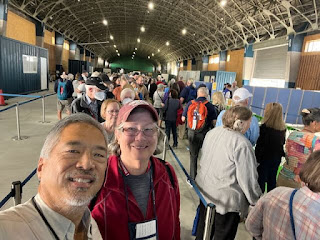


.jpeg)



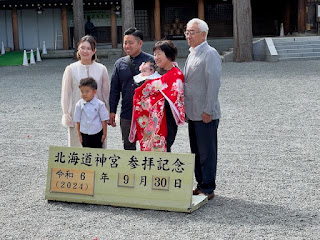

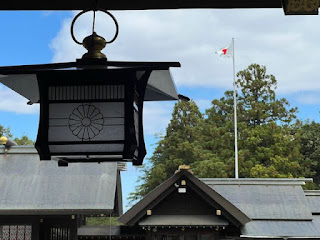








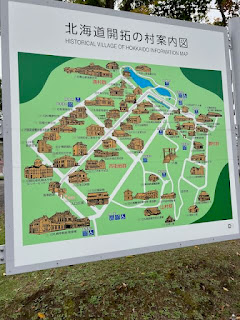
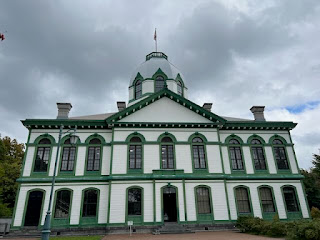










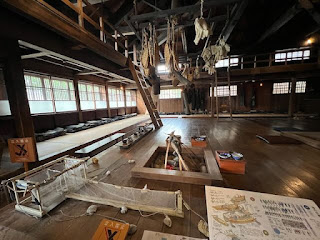























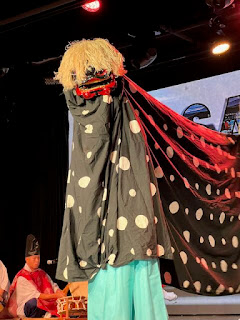
No comments:
Post a Comment
Note: Only a member of this blog may post a comment.